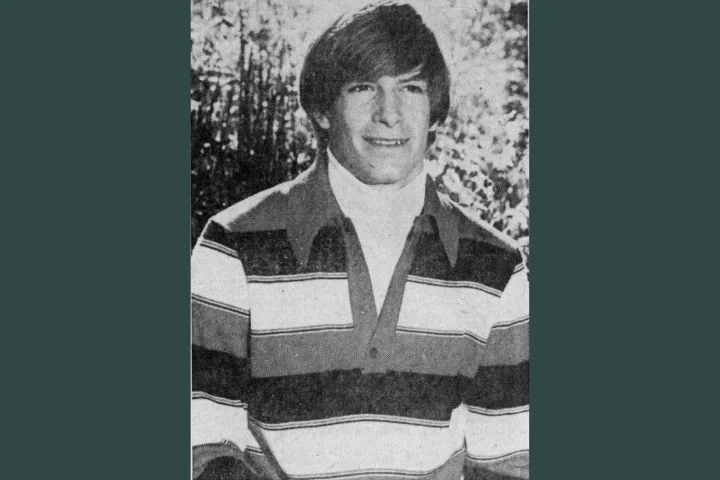Pamela Neal left the bank where she worked around 1:30 pm on Thursday, March 31, 1983, to go on her lunch break. The 22-year-old had taken a job as a teller at Key Savings & Loan in Englewood, Colorado, about five months earlier; she normally worked Monday through Friday from 9:30 am until 6:00 pm. Her apartment was right across the street from the bank, allowing her to walk to work each morning.
When Pam left for lunch that Thursday, she took her paycheck with her and walked two blocks away to a different bank, where she cashed her paycheck. She received several hundred dollars in cash, which she folded up and put in the pocket of her tan leather coat. She then walked to a nearby Safeway grocery store and ordered a piece of fried chicken and some macaroni and cheese from the deli counter. She bought a pack of Winston cigarettes and a scratch-off lottery ticket when she paid for her lunch, then walked the short distance back to her apartment to eat.
Pam’s roommate, Darlene Heintz, was working at the bank that day. From her teller window, she saw Pam as she entered their apartment building across the street. She expected to see her back at the bank shortly, but Pam never returned. When Pam wasn’t back by 2:30 pm, Darlene assumed she had simply lost track of time. She called the apartment to remind her roommate that her lunch break was over but got no answer.
Darlene waited a few minutes and then called the apartment for a second time. Once again, her call went unanswered. Concerned that Pam might have gotten sick, Darlene told the bank manager that she was going to run across the street and check on her. She rushed up to the third-floor apartment and found the door slightly ajar but there was no sign of Pam.
Unsure of what was going on, Darlene ran back to the bank and told the manager that Pam wasn’t in the apartment. After learning that the door to the apartment had been left open, the manager decided to call the Englewood Police Department and report Pam missing.
The first police officers arrived at the apartment building a few minutes later. They found plenty of signs that Pam had made it back to the apartment that afternoon but nothing to indicate what had happened to her. The brown paper bag containing her lunch was sitting, unopened, on the coffee table. The high heels she had been wearing were underneath the table, as if Pam had kicked them off as she sat down to eat.
Pam’s purse was on the floor near the table. Inside her wallet, officers found the scratch-off lottery ticket that she had just purchased. The cigarettes she had bought were also in her purse, along with an opened pack. Her apartment keys, which she would normally toss onto a chair as soon as she stepped inside, were found on the floor next to the chair, as if she had tossed them towards the chair but missed.
Pam would normally listen to her stereo or watch her favorite soap opera while she ate her lunch, but the apartment was quiet. It appeared she hadn’t been inside long enough to turn either the stereo or television on that day.
Nothing in the apartment seemed out of place and there were no signs of a struggle, but Pam wasn’t the type of person who would simply walk away from her life. Those who knew her were concerned that something terrible had happened to her. Their fears deepened after Darlene confirmed that none of Pam’s shoes were missing from their apartment. Wherever Pam was, she was barefoot.
Detectives were called to the apartment and immediately sealed it off as a crime scene. Englewood Police Sgt. George Egri would later tell reporters that they turned the apartment upside down looking for any clues as to what had happened to Pam. They vacuumed the floor and the furniture in hopes of finding hair or fibers that might lead them to the abductor. Unfortunately, their search came up empty.
Investigators canvassed the apartment building, asking each resident if they had seen or heard anything unusual that day. No one had. There were shops on the first floor of the building; a cabinetmaker in one of them recalled seeing Pam entering the building carrying the brown paper bag containing her lunch but hadn’t seen her leave.
The street the apartment was located on was a busy one, especially during the afternoon hours. Detectives noted that Pam, barefoot, would have been very noticeable on the city street, but no one recalled seeing her that day, nor did anyone report seeing someone being forced into a car. Investigators were at a loss to explain how Pam had been taken out of the building without anyone seeing a thing.
Detectives from the Englewood Police Department, assisted by investigators from the Arapahoe County District Attorney’s Office, launched a massive search for Pam. They distributed flyers with Pam’s photo to bus drivers and cab drivers throughout the city, hoping that one of them might recall seeing her after she left her apartment, but they came up empty. They even checked with all the shoe stores in the area to see if any salespersons remembered waiting on the barefoot woman. None of them had.
Despite their intensive investigation, detectives found no clues to Pam’s whereabouts and feared that she had been ki*lled. Although they had no solid evidence of foul play, they soon reclassified the missing person case as a homicide.
For those who knew her, Pam seemed to be an unlikely homicide victim. She had grown up in the Denver metropolitan area and was a 1978 graduate of Cherry Creek High School. She went on to Western State College in Gunnison; after graduating from there in 1982, she spent time in Alaska working as a nature photographer before returning to the continental United States.
Pam moved back to Colorado late in 1982 and was hired as a bank teller at Key Savings & Loan. Since she didn’t have a car, she had been thrilled to find an apartment so close to her place of employment. She loved her job and was described by coworkers as a sweet and friendly young woman who was very reliable and easygoing.
Pam’s parents, Barney and Pat Neal, lived in Maryland at the time of her disappearance. Although Pam didn’t see them very often due to the distance between their homes, she stayed in weekly phone contact with them. Her father had recently agreed to give her the money she needed to put a down payment on a car, something Pam had been talking about for a while. She vanished before she was able to get the car of her dreams.
According to her mother, Pam was a happy person; she was always upbeat and had a knack for putting others in a good mood as well. She loved spending time outdoors, especially camping, and she enjoyed taking care of plants and making jewelry.
Investigators agreed that Pam had a very low-risk lifestyle; she didn’t have a large circle of friends and spent most of her evenings watching television with her roommate. She didn’t frequent bars or nightclubs and hadn’t had any disputes or disagreements with anyone.
Pam had a steady boyfriend; he was working an hour away in Longmont, Colorado at the time of her disappearance and investigators seemed to rule him out fairly early on in the investigation. Although many expressed doubts about his innocence, there was no evidence suggesting he was involved and he was never charged in connection with the crime.
The investigation into Pam’s disappearance soon stalled and then went cold. Although Barney knew that his daughter never would have vanished voluntarily, he found himself wishing that was the case. He told one reporter that he hoped Pam had simply gotten stressed and needed to get away from everything but was now too embarrassed to come back due to the publicity her disappearance received.
Pam’s parents eventually came to terms with the fact that their daughter was most likely de*ad. Barney admitted, “It would be painful if they found her body, but the uncertainty of what happened just amplifies the pain.” They just wanted to know what had happened to her.
Pam’s disappearance remains as much of a mystery today as it was on the day she was reported missing. Detectives still aren’t sure exactly what happened to her, but they believe that she most likely left her apartment door unlocked and someone followed her inside. It’s possible that someone saw her cash her check at the bank and decided to rob her; her coat, along with the cash she had placed in her pocket, was not found at the apartment.
Pamela Neal was just 22 years old when she went missing in 1983. She was a friendly and happy person who had no reason to walk away from her life and was likely a victim of foul play. Pam has brown eyes and brown hair, and at the time of her disappearance, she was 5 feet 3 inches tall and weighed 110 pounds. She was last seen wearing a light green dress with a white lace color and a tan leather jacket; she was also wearing a turquoise bracelet and ring. If you have any information about Pam, please contact the Englewood Police Department at 303–762–2438.






